Whether it is sun or snow you are yearning, there is no need to leave Australia to banish winter blues! Australia’s winter is this summer’s best kept secret. The rest of the world does not realise that Australia’s winter holds warm weather, beaches and roads which are less crowded, and better deals for your wallet! With Tasmania and the ski season in the Snowy Mountains giving you a winter chill if desired.
A winter Down Under means you can still get warmth and the excessively hot sticky weather in the tropical north of the country gone. Flies and mosquitos are not out in full force, the stingers have disappeared, as too the peak season so saving you cash on airfare, better deals on tours, day trips and still packed with a bucket list of things to do.
Here are a few ultimate destinations to consider during the winter in Australia and the Northern Hemisphere’s summer.
1. The Outback Road Trip to Uluru
Australia’s most iconic natural attraction Uluru (Ayers Rock)
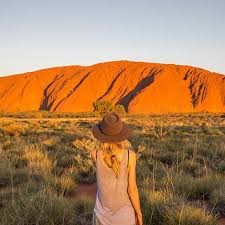
Weather: Clear Skies, 20-23 degrees Celsius during the day dropping to single figures overnight.
Prices: Camper Hire starts from $100 a day.
If you visit Uluru in the winter you will escape the horror of the summer’s intense heat and ludicrous flies! You will avoid the increased humidity as well as monsoonal rains and storms! Instead you will experience a warm and cold getaway all in one. The nights will be very cold but the days will be warm and dry. Uluru in the winter has cooler weather which is safer for walking, or riding a bike round the base of the rock, so soaking up its spirituality. At this time of year the colours of the rock are more dazzling and you are more likely to see the hidden treasures of plants and animals living there.
Either fly directly to Uluru, or as no trip to Australia is complete without a road trip, include a stop to Uluru on that road trip. The Stuart Highway cuts straight through the Outback of the Northern Territory connecting Darwin to Alice Springs and passes by Uluru. The winter weather is much more suitable for Outback Road Trips as with the tropical climate in the Northern Territory there is only two distinct seasons Wet or Dry. In the Wet season flies and mosquitoes come out in full vengeance and you will find yourself literally steaming in around 38 degrees, so travelling in the dry season makes sense!
What’s On in Winter:
• Immerse yourself in the new Field of Light installation: See the display by yourself, or on camelback, or helicopter.
• In May you can join in with the Uluru Camel Racing Club.
https://www.ayersrockresort.com.au
2. Snowy Mountains
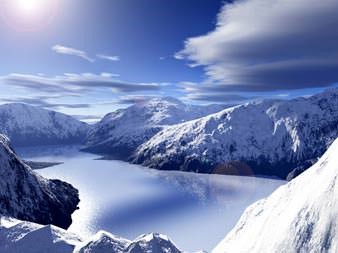
Weather: July and August are the coldest months, during which snow is most likely to fall.
Prices: In June and October the hotel prices are cheaper. Some resorts offer discounts for booking in advance.
In Australia, July and August are the coldest months of the year and offer the best snow conditions in the area’s ski resorts. Temperatures at the top of resorts, like Thredbo, Charlotte Pass and Mount Buller, stay around freezing during these months. Snowfalls can start as early as April and as late as December.
Nestled inland between Sydney and Melbourne, the Snowy Mountains are the highest Australian mountain range and contain Australia’s highest mountain, Mount Kosciuszko. Named “Snowy” for obvious reasons, the area is the closest place for Australians to go skiing or snowboarding. There are several ski resorts sitting on both the New South Wales and Victoria sides of the border, including Perisher, Thredbo and Mount Buller. All the resorts are located within the Kosciuszko National Park. The alpine village of Thredbo is probably the most well-known with plenty of runs for skiers. A variety of terrain and entertainment can also be enjoyed at Perisher in the Kosciusko National Park and is the largest ski resort in the Southern Hemisphere. Perisher also attracts the world’s best skiers and snowboarders with runs graded into beginners, intermediates and advanced. The smaller snowfields Charlotte Pass and Selwyn Snowfields are uncrowded and ideal for new skiers and families. Mount Buller has plenty of snow play action as well as a snowmaking machine to keep the kids amused. Clothes and equipment can be hired at the resorts as well as from towns close by, such as Cooma and Jindabyne.
What’s On in Winter:
• Go visit the Peak Music Festival June 8th-11th with 4 days of music, snow fun and laughter
• Celebrate a White ‘Christmas in July’ at Thredbo, and look out for Santa on the mountains as well as joining in the activities and the Thredbo style festival.
https://www.thredbo.com.au/events/2018/christmas-in-july-2/
3. Hamilton Island and the Whitsundays
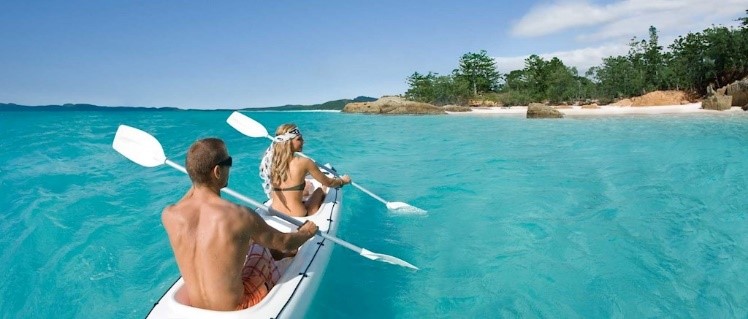
Weather: Winter is the dry season so less rainfall than other months, average temperature ranges between 21-25 degrees Celsius.
Prices: Most dreams come at a price but you will never want to go home!
https://www.hamiltonisland.com.au/
As the southern states of Australia feel the cooler months of winter, these picturesque islands escape the chill. From May to October there is low humidity, plenty of blue skies and sun drenched beaches. Enjoying palm fringed sea views and juice cocktails allows you to fill yourself with what dreams are made of.
The beautiful Hamilton Island in the Whitsundays offers a winter escape with a huge range of water sports and shore based activities. Jet skiing, dinghy, fishing boat hire, kayaking go cart racing, mini golf, bowling, volleyball means there is family fun for everyone. There is always a chance to go on a sunset cruise or experience the breath-taking Barrier Reef. On Hamilton Island itself there are a variety of restaurants and shopping options. The Whitsundays includes a stunning natural landscape of coast and islands dotted with secluded beaches and crystal clear waters. You can snorkel or scuba dive to experience the colourful underwater reefs or spend a day splashing in the aqua and white waters of the world famous Whitehaven Beach.
What’s On in Winter:
• Enjoy Audi Hamilton Island Race Week 18-25th August 2018 ( Australia’s largest offshore keelboat regatta) and watch the excitement of the yachts set sail around the Whitsundays Islands
http://www.hamiltonislandraceweek.com.au/
• Watch or join in on the Great Whitehaven Beach Run in June followed by the Airlie Beach Running Festival in July.
4. Darwin
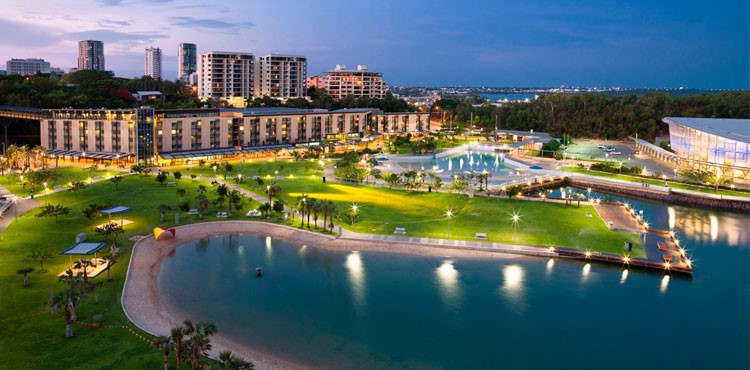
Weather: clear blue skies, warm days up to 30 degrees Celsius, minimum 20 degrees Celsius low humidity.
Prices: A range of prices and accommodation to appeal to comfort and needs. Darwin accommodation fills up very quickly in dry season.
https://northernterritory.com/darwin-and-surrounds/destinations/darwin
It’s no surprise that Darwin in the top end of Australia is the go–to destination in winter, particularly mid-June through to the end of August, as it is the middle of the dry season. For those wanting to escape the cold weather south, the comfortable warmer weather makes getting out and exploring Darwin a much more enjoyable experience. Also the pleasant night time temperatures means you are more likely to be able to sleep without having a fan or the air conditioner on.
Darwin is a tropical paradise with a backdrop of unsurpassed beauty. The city of Darwin itself has plenty of things to do. Explore many winter markets, where you will be able to grab some local food and hand crafted bargains. Spend time at the Museum and Art Gallery of the Northern Territory, or in contrast, Darwin’s Wave Lagoon, a stinger and crocodile-free wave and swimming lagoon on Darwin’s waterfront. For those with a particular interest in history the Defence of Darwin Experience within the city’s Military Museum Precinct is an essential visit as it allows you to understand the city’s involvement in World War II. Commercial galleries in the city are great places to see and buy art from, then as the evening sets in Darwin Harbour offers visitors magnificent tropical sunsets on board an historic wooden pearling lugger. The city experience and continue in the many bars and pubs, on the infamous Mitchell Street, as well as the inner city itself.
What’s On in Winter:
• Take in the atmosphere of the most famous Mindii Beach Market, every Thursday and Sunday night in the winter months. Also a perfect spot to watch the most gorgeous Darwin Sunset as the night draws in.
• Take advantage of the free movies under the stars as well as the beauty of Yellow Water in Kakadu National Park.
• Darwin Cup Carnival festivities during July and August.
5. Lord Howe Island
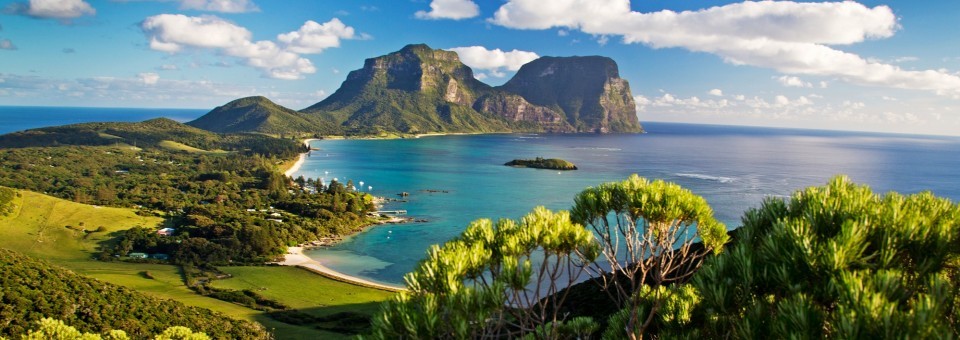
Weather: Days are sunny and warm average of 19 degrees Celsius falling to 12-14 degrees Celsius at night.
Prices: Excellent off season deals, winter packages can start from $749 including flights.
On Lord Howe Island, the pristine waters and white sandy beaches are what dreams are made of, as this lost paradise could possibly be one of the most beautiful places on Earth! Many people who have visited the island come away with a profound experience of sudden bliss as this ancient island lures you to find peace. In winter the surrounding warm seas ensure mild sunny days then the cooler evenings ensure it is even cool enough to cosy around a fire.
Just a 2 hour flight from Australia’s east coast this tiny island, is just 11km in length and 2km wide, with towering rock formations and ancient banyan forests. The island also has a protected lagoon, which is home to the world’s southernmost coral reef and perfect for snorkelling. Some of the pleasures to be had here are a wide variety of water sports including stand up paddle boarding, kayaking, and kite surfing.
What’s On in Winter:
• Visit the Lord Howe Island Natural History Museum, giving a good overview of the islands ecology and history.
• Seven Trees Walk can be experienced from May to November, a premier five day guided adventure.
• Seven Pinetrees food and wine week is held from May to October with master class cooking and wine tasting.
• Seven Community markets are held on the last Sunday of every month.
6. Tasmania
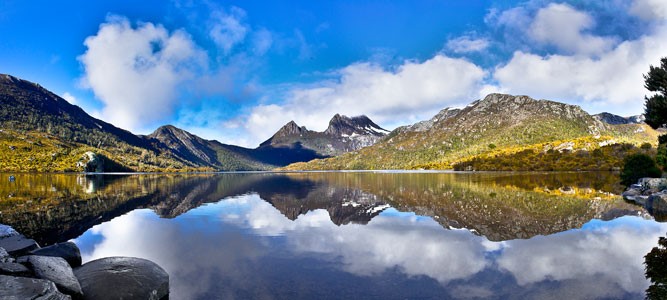
Weather: Winter daily temperatures average between 3 and 11 degrees Celsius.
Prices: During the winter months you can get some great deals, but it is wise to write an itinerary and book early.
Whilst cold and darkness may scare some away in winter the enchantment of crisp air, falling snow blanketing the mountains and eucalyptus tree may not. Although a frosty morning may make it hard to get out of bed, winter in Tasmania is the time to play with festivals, chocolate, hot apple cider and mulled wine. Winter gives clear, crisp nights of stargazing and maybe even a special appearance of the Aurora Australis, which tend to shine the brightest toward the end of winter and into September.
The rugged beauty of Tasmania has some of the best bushwalking and camping spots in the world. Braving the wilderness in the winter means you get to feel like a true adventurer battling the elements without the summer crowds. The Islands winter wonderland holds eight mountains above 1,500m giving plenty of magical, snow covered scenery and hidden gems for skiing. Tasmania’s internationally acclaimed vineyards hold incredible whisky- which can take the edge off a winter chill in the belly! Seafood, cheeses, truffles and local cuisine as well as a nearly unlimited supply of cider, are some of the highlights of a visit to the island. At Cradle Mountain – Lake Clair National Park, you can experience the ancient rainforests and alpine heaths as well as take part in a Tasmanian Expedition of a snow shoeing expedition on the world famous Overland Track and iconic Cradle Mountain.
What’s On in Winter:
• Experience Dark Mofo, a midwinter festival, is a must for food lovers as well as a place to check out its public art installations as well a live music, gallery events at Mona (the Museum of Old and New Art) and the Winter Solstice
• Nude Swim in the Derwent River.
• The Festival of Voices in June and July brings harmonies in concert halls, theatres and public spaces across the state.
• Huon Valley Mid-Winter Festival in July celebrates the region’s apple growing.
• Indulge at the Chocolate Winterfest in Latrobe northern Tasmania, as well as take part in workshops in which you can learn how to make your own chocolate!
7. Port Douglas
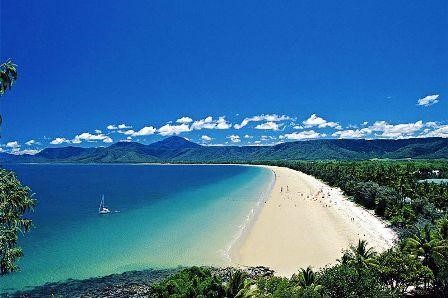
Weather: April – September is known as the hot season, days reaching tops of 25 degrees and lows of 17 degrees.
Prices: It is unfortunately a more popular destination in winter so shop around for rates.
http://www.visitportdouglasdaintree.com/
Port Douglas is at its best in the winter months and the perfect place to escape the Australian winter blues. With almost perfect weather, white sandy beaches and spectacular natural attractions Port Douglas is renowned as being one of the most magical places in Australia. Enjoying a diverse selection of cuisine or taking a long walk on the iconic Four Mile Beach, to watch a magical sunset, are only a few of the things the buzzing town has to offer. A winter visit also means avoiding the dreaded box jellyfish which only appears in the summer months. Another plus is that the winter tourism in Port Douglas also coincides with whale watching season.
The wonders of the Great Barrier Reef is at its best in winter months. Day trips out to the reef are a must! Operators let you choose what you want to do once you are out there, snorkel, dive or tour on a glass bottom boat. A short drive from Port Douglas is the 140 million year old Daintree Rainforest, with its unique ancient ecology the rainforest is home to an array of rare plants and animals. The area of 1200 square km and is the largest piece of protected tropical rainforest in Australia.
Whilst in Daintree, journey into the lush rainforest of the Mossman Gorge and feel its enchantment of the rich indigenous heritage. The Gorge leads into Mossman River and discover a swimming hole which is said to have water which is the second purest in the world. Take one of Ngadiku Dreamtime walks in a private section of the forest, to learn about Aboriginal customs, medicinal properties of plants, food and to hear Dreamtime stories. Jungle zip lining, kayaking, or beach horse riding are also all on offer at Daintree. Visitors can also expect to see the Minke Whales cruising around the reef as they migrate up the coast of Australia in search of warmer waters.
• What’s On in Winter
• Port Douglas Carnival is held annually in May and is a mecca for lovers of all things food, music, fun and sun
• Quick Silver Port Douglas Race week every year in May invites all yachts to join in a week of sailing food and fun.
• Take the Flames of the Forest dining experience.
• Go on the Great Barrier Reef Ocean Challenge in June, Australia’s longest distance outriggers race.
• See Minke whales swimming around the reef as they migrate up the coast of Australia to search for warmer waters.
8. Broome
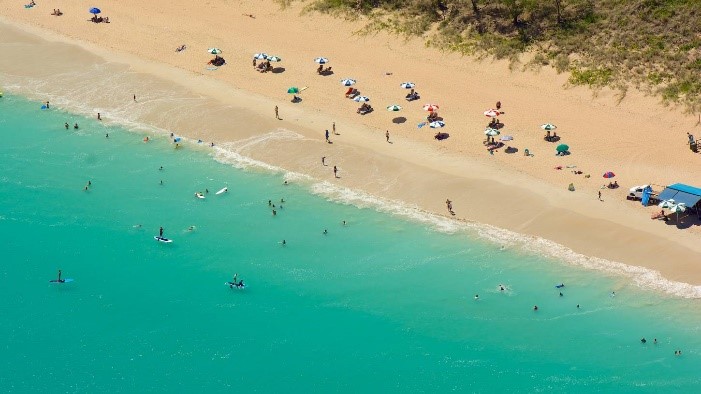
Weather: Mild temperatures and lower humidity, average daily temperature of 28 degrees Centigrade.
Prices: Steer clear of school holiday periods where flight and hotel prices tend to skyrocket.
https://www.broomekimberley.com.au/
Sitting on the edge of the Indian Ocean, Broome in Western Australia is and eclectic bubble with great shopping, cafes, restaurants and nightlife. It is probably the most remote area for a winter getaway but that is part of its slow paced and bohemian eclectic charm.
Broome comes alive in winter with festivals and events showcasing the town’s rich history and unique cultural diversity. Surrounded by breath taking scenery and boasting the perfect tropical weather the friendly local encourage visitors to take part in everything they love about their vibrant town. Ranked as one of Australia’s best, the 22km long Cable Beach, has turquoise water, rock pools, flat sweeping white sand and the most iconic sunsets. You can take part in an array of water sports, fishing trips, sea plane adventures and visit a pearl farm. Sleeping out under the night sky is most rewarding during the dry season when the skies are cloudless and there’s little fear of being flooded in by the unpredictable wet season.
What’s On in Winter:
• The annual Broome Races a nine week racing season which runs from June through to mid-August and includes the Broome Cup and Ladies Day.
• The exotic Festival of Pearls late August “Shinju Matsuri” features a kaleidoscope of events paying tribute to the town’s heritage and culture.
• Each month from April to October, the full moon rising, will reflect off the exposed mudflats at low tide on Roebuck Bay, creating an optical illusion of a staircase hence the ‘Staircase to the Moon’ is a natural phenomenon to be experienced at least once in a lifetime.
• Take a Camel Ride at Sunset On the beach
9. Cairns
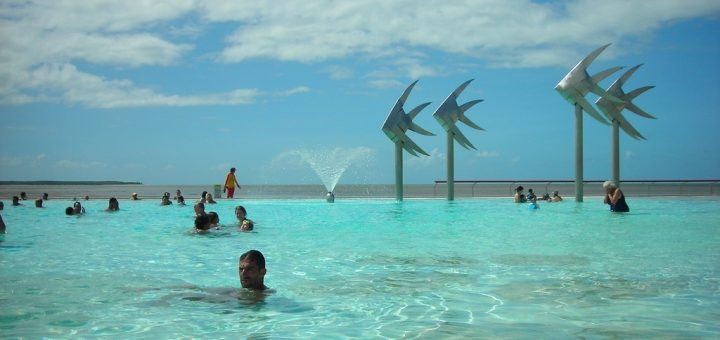
Weather: Pleasant, dry days, average temperature 26 degrees Centigrade.
Prices: Great deals available in the winter season.
http://www.cairnsinfo.com/
Basking in glorious sunshine and light tropical breezes Cairns offers the perfect destination for beach worshippers. Amongst palm trees and tropical beaches nearby, the warm weather you can enjoy the sunshine and warm days without the crowds.
Cairns acts as a gateway to the world’s largest coral reef system, the Great Barrier Reef as well as a starting point to explore neighbouring islands. The Cairns Esplanade is bordered by the city centre and the Coral Sea and has plenty of cafes restaurants and bars. There is a Zoo, Botanic gardens and bungee jumping, as well as many other activities to join in on.
Cairns might not have a beach, but one of its greatest treasures is a 4800-square-metre saltwater lagoon pool which has sandy edges and shallow sides for children to play. Up the coast from Cairns are at least five sun-soaked beaches. Set among waving palms, Kewarra beach being a local favourite and a perfect place for morning coffee, an ice-cream or an afternoon tipple. Experience a barbeque along the beachfront of Trinity Beach or grab a picnic and visit the quiet hidden tropical rainforest spot of Crystal Cascades. Karanda is a small village in the nearby rainforest which attracts and inspires artists and artisans making the local galleries and markets unique. In Cairns you can wander through the town and surrounding trails, bob and dive through the Australian Butterfly Sanctuary, meet feathered friends at Birdworld and get to hold a Koala at Koala Gardens.
What’s On in Winter:
• Take the railway to the hill-top village of Kuranda and the Skyrail down to enjoy two distinct experiences of the heritage-listed rainforest.
• Mission Beach markets are held on the 1st and 3rd Sunday of the month and the Mission Beach Monster market is held on the last Sunday of each month.
• Fortnightly cupcake and walking tour.
10. Kununurra and the Kimberley
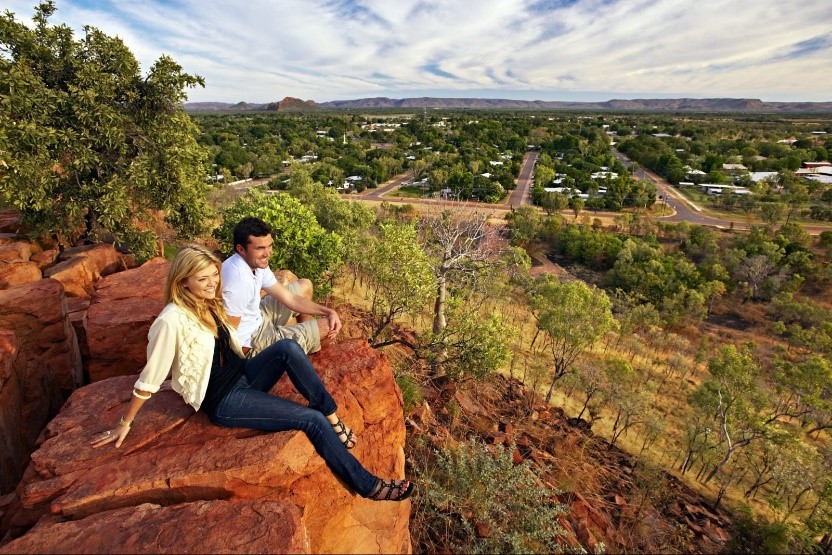
Weather: The temperature is pleasantly warm (low 30’s during June / July), there is little chance of rain and all of the roads should be open.
Prices: Accommodation venues tend to fill up so it is advised to make advanced bookings to avoid disappointment.
http://www.visitkununurra.com/
The Kimberley covers nearly 424,000sq km, and the best time to go is June- August, with fantastic warm weather and clear blue skies. In the Eastern entrance of the Kimberley region in Western Australia, is a laid back town of Kununurra. Set in flourishing farmland with tropical fruit and sandalwood plantations many travellers make their way there to escape the cold. In contrast to the rusty orange desert the region has waterfalls, plants and tropical birds a plenty. In Kununurra there are good communications, accessible services and supermarkets making it every traveller’s favourite as a slice of civilisation and vital hub to explore the wonders of North West Australia.
A visit to Kimberley makes the Bungle Bungle Range a must to be discovered in Purnululu National Park. Its dramatic landscape is ablaze with colours and its distinctive striped beehive domes is most definitely one of the most spectacular and memorable places you ever visit.
What’s On in Winter:
• The annual Kimberley Moon Experience Concert on Staged in May on the banks of the Ord River in Jim Hughes Amphitheatre.
• The Ord Valley Muster in Kununurra in May offers a 10- day festival including rodeo, music, art, culture, comedy food and dining experiences.
